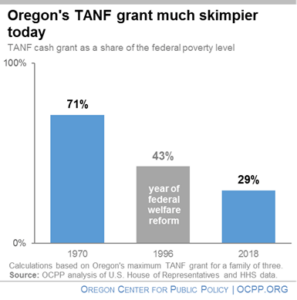In Oregon, we talk about how important it is for our children to have a high quality education — important not just for the kids, but also for our communities and state economy. We have set lofty goals for education in Oregon.
At the same time, we know that a child’s early environment affects performance in school and success later in life. Extensive research shows that a basic level of family economic security is vital to healthy child development.
Now our state needs to walk the talk — especially when it comes to our state’s most vulnerable children.
Given Oregon’s education goals and what we know about child development, it makes sense for the legislature to prioritize protecting our poorest children from the most toxic effects of economic privation. Yet there has been little action on that front, judging from the status of Oregon’s Temporary Assistance for Needy Families (TANF) program.
TANF was created as a lifeline for children in families struggling to make ends meet. It exists to help families that have fallen on hard times, including women and children escaping abuse, avoid homelessness and get back on their feet. Only families with virtually no income that have exhausted their personal resources can get help. TANF provides cash assistance and services, such as subsidized child care, job training, and employment supports.
About 40,000 Oregon children now rely on TANF.
The cash assistance is intended to meet a family’s basic needs such as food, clothing, shelter, and utilities. In the past, the amount of the grant, though meager, was closer to what a family needed to cover those basics.
But over time, the value of Oregon’s cash assistance has eroded. Rarely has Oregon bothered to raise the grant amount, and the increases lag far behind the pace of inflation. In 1970, the maximum Oregon grant was equivalent to about 71 percent of the federal poverty line. Today, the maximum grant for a parent with two children is $506 per month, the equivalent of just 29 percent of the poverty line.

While growing up in poverty can stack the deck against kids succeeding, boosting the amount of Oregon’s TANF cash grant works in their favor and can have lasting social and economic benefits for children throughout their lives.
Oregon children can achieve their potential, if we create the conditions for them to do so. Those conditions include an updated support structure that catches them before they fall too far down. Now is the time for the Oregon legislature to do what is long overdue — boost the TANF grant amount.
Learn more about what we can do to improve Oregon’s TANF program.





